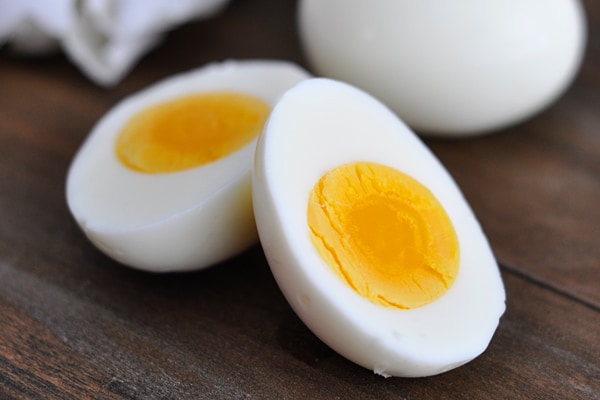10 Ways to Add Flavor for 10 Calories or Less
If you consider yourself a healthy eater, you’ve probably come to rely on a few nutritious standbys, like lean protein, steamed veggies and whole grains. But how many times a week can you have grilled chicken, steamed broccoli and brown rice for dinner before you’re banging your head against the wall? You might think the answer lies in high-calorie marinades or fatty cream sauces to make dishes fun and exciting again. The good news: There are plenty of ways to please your taste buds without adding a calorie bomb to your dish. Read on for 10 kitchen secrets for jazzing up ho-hum meals for 10 calories or less.
1. Lemon Juice
This juice is a great way to finish off a dish with zesty tang.
Calories: 4 per tablespoon (lemon juice only)
2. Cucumber Slices
Peel a raw cucumber and add slices to a water pitcher for a refreshing spa-like beverage. Not only does the flavor of the cucumber enter the water, some of the cucumber’s nutrients do too, including vitamins C, A, K, iron, calcium and potassium. Munching on the cucumber slices will of course score you maximum vitamins and nutrients.
Calories: 1 per slice
3. Orange Juice
Add two tablespoons orange juice to one tablespoon olive oil to make a citrus dressing for salads. Orange juice is packed with immunity-boosting vitamin C and may help protect against certain types of cancer.
Calories: 7 per tablespoon (orange juice only)
4. Hot Sauce
Most hot sauces have fewer than five calories per teaspoon, so a few shakes will really kick your dishes up a notch without adding many calories at all. Add it to grilled chicken or air-popped popcorn instead of piling on the salt and butter.
Calories: 2-5 per teaspoon
5. Fresh Herbs
To make them last longer, rinse with cold water and dry with a paper towel. Then, wrap a paper towel around them and keep them in the fridge in an open food storage bag. When you’re ready to use them, just add the whole leaves to your dishes (like bay leaves in a stew) or dice them up and sprinkle them on top to finish a dish or mix them into sauces and soups.
Calories: <1 per tablespoon
6. Curry
Add one to two teaspoons of the popular Indian spice to roasted vegetables and serve over brown rice.Some preliminary studies have found that curry may help with cognition function, and might help protect against heart disease and cancer, though more research is needed.
Calories: 7 per tablespoon
7. Turmeric
This Indian spice has potent anti-inflammatory properties, and has been shown to aid with digestive problems and pain relief.
Calories: 1 per teaspoon (turmeric only)
8. Fresh Ginger
Ginger has been used in Chinese medicine to treat issues like upset stomach, nausea, vomiting and other digestive issues.
Calories: 2 per teaspoon
9. Cocoa Powder
Satisfy chocolate cravings and add a touch of sweetness to snacks and meals by sprinkling on unsweetened cocoa powder. Make you own chocolate-flavored nuts by sprinkling cocoa powder on raw almonds, peanuts and hazelnuts, or add a dash to smoothies, oatmeal, puddings and yogurt.
Calories: 4 per teaspoon
10. Tea
Use tea as a spice by simply grinding up the tea leaves and using them as a delicious rub for a fresh Asian-cuisine flavor.
Calories: 0 per tablespoon

















